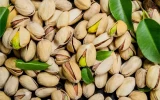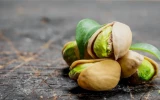Average Pistachio Yield per Acre (What to Expect)
Pistachios have a natural alternating-year cycle, which means that they tend to produce higher yields during an "on-year" and smaller yields during an "off-year." In this article, we'll explore how many pounds of pistachios you can expect from an acre to determine the success of your plantation.
The average yield per acre of pistachios is around 4,300 pounds during the on-years and around 2,800 pounds during the off-years. Pistachio production is projected to reach yields as high as 3,130 pounds per acre in 2025 (on-year) and decrease to about 2,092 pounds per acre in 2028 (off-year).
The yield per acre can vary depending on climate, soil conditions, tree age and variety, and farming practices. Let's take a closer look at how these factors affect the average pistachio yield.
Summary
- The Kerman pistachio variety is highly prized for its large, flavorful nuts and is known for its high yield (2,500–4,000 lbs per acre) and excellent quality.
- The Golden Hills, Lost Hills, and Randy varieties are also highly regarded for their high yield potential, exceptional flavor, and adaptability to different growing conditions.
- The Peters variety is a high-yielding cultivar (2,800–3,800 lbs per acre), making it an attractive option for commercial pistachio orchards due to its ability to produce a significant amount of nuts per tree.
- Young pecan trees take 6–8 years to start bearing a substantial harvest, while mature trees can produce more nuts but require adequate care and management to sustain higher yields.

On this page:
Average Pistachio Yield per Acre
Yield per acre represents how many pounds of pistachios you can expect to harvest from one acre of land. In 2017, the average return per pound of an acre of pistachios was noted at around 2,397 pounds.
Additionally, pistachios have a natural alternating-year cycle, which means that they tend to produce higher yields during an "on-year" and smaller yields during an "off-year."
You may expect fully mature acres' yields to be about 4,300 pounds per acre during on-years and around 2,800 pounds during off-years.
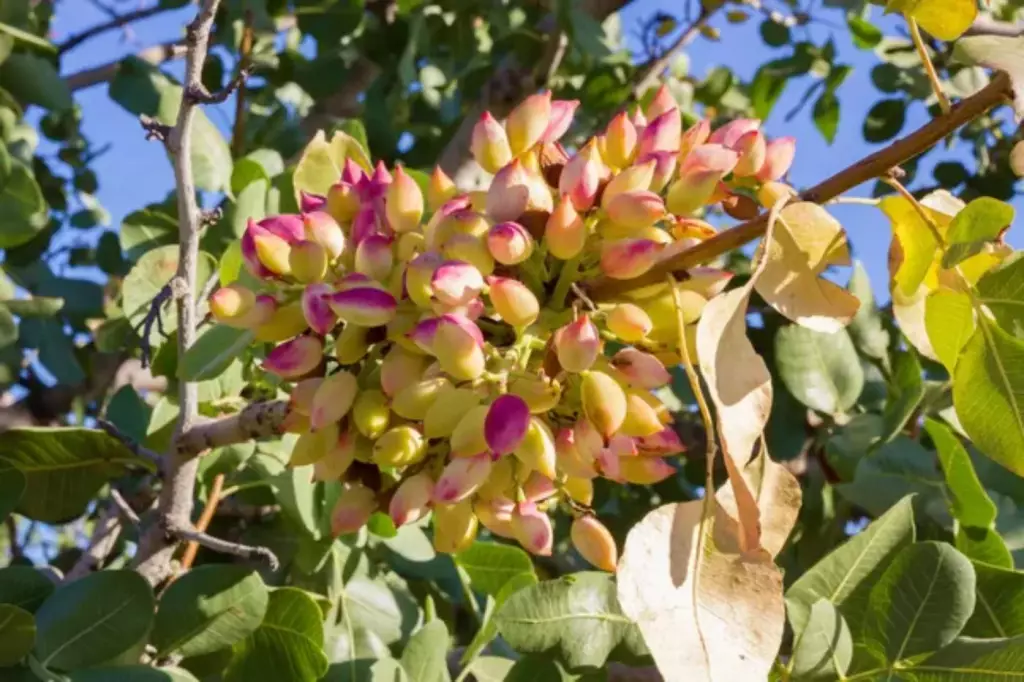
But on average, a well-managed pistachio farm can produce around 1,500 to 3,000 pounds of pistachios per acre, yielding around $5,000 to $10,000 profit.
One projection for pistachio production from 2023 through 2031 suggests that the overall yield per acre could reach as high as 3,130 pounds per acre in 2025, an "on-year," and decrease to about 2,092 pounds per acre in 2028, an "off-year."
With the ever-changing nature of agriculture and market demands, keeping an eye on factors that influence yield along with production projections can help you navigate and succeed in the pistachio industry.
Average Pistachio Yield Based on Variety
The table below showcases the estimated yield per acre for different types of pistachio varieties:
| Pistachio Variety | Estimated Yield per Acre |
|---|---|
| Kerman | 2,500-4,000 lbs |
| Peters | 2,800-3,800 lbs |
| Golden Hills | 2,200-3,500 lbs |
| Lost Hills | 2,600-3,600 lbs |
| Randy | 2,300-3,900 lbs |
The Kerman pistachios are a widely-cultivated and commercially important variety
The Kerman variety of pistachios is highly prized for its large, flavorful nuts and is known for its high yield and excellent quality. The tree is a vigorous, upright grower with a relatively open canopy, making it well-suited for mechanical harvesting.
They are also known for their ability to thrive in warm, dry climates, and they are particularly well-suited to the arid regions of California, Arizona, and other parts of the southwestern United States. They are also grown in several other countries, including Iran, where the variety originated.
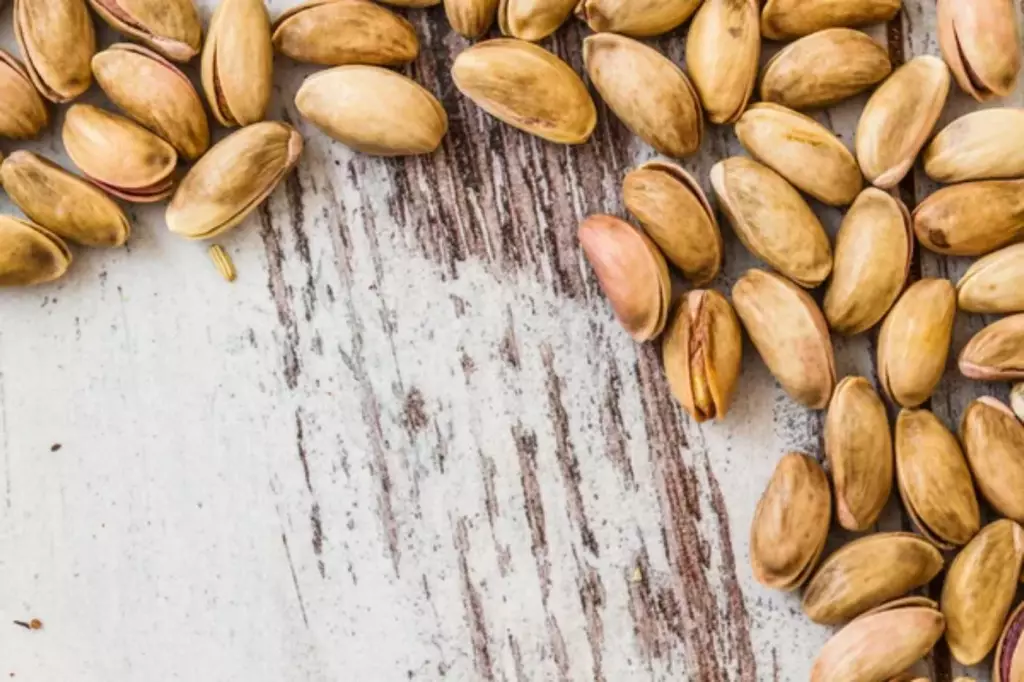
The nuts produced by Kerman pistachio trees are large and elongated, with a distinctive pale, creamy shell. The kernels are a vibrant green color and have a rich, buttery flavor that is highly sought after in both domestic and international markets.
In addition to their culinary appeal, Kerman pistachios are also valued for their nutritional benefits. They are an excellent source of protein, healthy fats, fiber, and a range of essential vitamins and minerals, making them a popular choice for health-conscious consumers.
The Peters variety of pistachios is known for its high yield and excellent nut quality
Peters pistachios are known for their large, flavorful nuts and high yield potential. The trees are vigorous and have good branching, which allows for efficient nut production. The nuts themselves are typically large in size and have a bright green color, making them visually appealing as well as delicious.
The Peters variety is also known to be a high-yielding cultivar, meaning that it produces a significant amount of nuts per tree. This high yield potential makes it an attractive option for commercial pistachio orchards, as it can lead to increased profitability for growers.
The Golden Hills pistachios are a high-yielding variety
The Golden Hills variety of pistachios is a popular cultivar known for its large, flavorful nuts and high yield. These pistachio trees are well-suited to the climate of California's Central Valley, where they thrive in warm, dry conditions. The Golden Hills variety is known for its vigorous growth and ability to produce a bountiful harvest of high-quality nuts.
In terms of yield, they are known to be productive, with the potential to produce a significant amount of nuts per acre. The yield of pistachio trees can vary depending on factors such as tree age, orchard management practices, and environmental conditions.
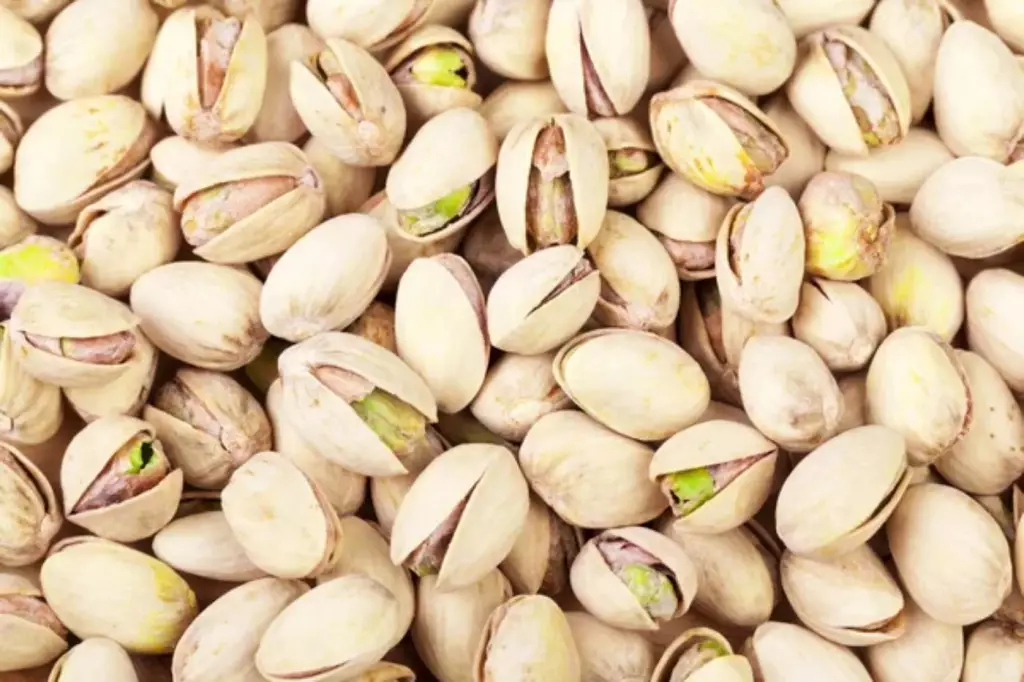
The nuts produced by the Golden Hills variety are renowned for their large size, vibrant golden color, and rich, buttery flavor.
These characteristics make them highly sought after in the market, both domestically and internationally. The high yield and exceptional quality of the Golden Hills pistachios make them a valuable crop for growers and a popular choice among consumers.
Lost Hills is a popular variety of pistachios known for its high yield and excellent flavor
These pistachios are primarily grown in the Central Valley of California, where the climate and soil conditions are ideal for producing high-quality nuts.
The growing conditions in the Central Valley, including hot, dry summers and cool winters, contribute to the exceptional quality of Lost Hills pistachios.
The region's long, sunny days and well-drained soil provide an optimal environment for the trees to thrive and produce a bountiful harvest.
In addition to their impressive yield, Lost Hills pistachios are also prized for their rich, buttery flavor and vibrant green color. These qualities make them highly sought after in both domestic and international markets.
The Randy variety is known for its exceptional productivity and desirable characteristics
The Randy variety is highly regarded for its exceptional productivity and desirable characteristics. This variety is known for its ability to produce high yields of quality produce, making it a popular choice among farmers and gardeners alike.
One of the key characteristics of the Randy variety is its adaptability to various growing conditions. It can thrive in a range of climates and soil types, making it a versatile option for growers in different regions.
In addition to its adaptability, the Randy variety is also prized for its desirable traits such as disease resistance, flavor, and shelf life.
Its resistance to common plant diseases helps reduce the need for chemical interventions, making it an attractive option for those practicing sustainable and organic farming methods.
Furthermore, the flavor of the produce is often noted for its exceptional taste, appealing to consumers and chefs alike. The extended shelf life of this variety's produce adds to its appeal, as it allows for longer storage and transportation without compromising quality.
Pistachio Production Factors
In this section, we'll discuss the different factors you need to consider to maximize your pistachio yield:
Consider the soil and climate for optimal production
In general, pistachios prefer deep, well-draining soils with a pH between 7.0 and 8.0. They can tolerate some salinity, but you should aim for minimal soil salt content.
Additionally, pistachio trees thrive in regions with hot, dry summers and cool, wet winters. It's vital to ensure your trees receive sufficient chilling hours (around 800-1,000 hours) during the dormant period for proper tree development.

Keep track of irrigation and water availability
Regular irrigation is necessary, especially during the tree's initial establishment and growth phase. As the tree matures, reduce irrigation frequency but maintain sufficient water levels, especially during the hot summer months.
Monitor soil moisture and consider implementing a water-saving irrigation system, like drip irrigation, to optimize water usage and boost productivity.
The age of a pistachio tree can significantly impact yield
Typically, young trees don't produce many nuts. It usually takes about 6-8 years for a tree to start bearing a substantial harvest.
As the tree ages, it reaches full maturity, and yields can increase. The average yield per pistachio tree usually ranges from 5.5 to 11 lbs. Keep in mind that although mature trees can produce more nuts, they also require adequate care and management to sustain these higher yields.
Proper pruning and orchard management practices can directly influence your pistachio yield
Remove dead or diseased branches, and thin out crowded growth to improve airflow and light penetration. Pruning also helps control pests and diseases, such as Alternaria late blight, which can be detrimental to yield.
Furthermore, implementing effective orchard management practices, including fertilization and pest control, can contribute to a more abundant and healthier pistachio harvest.
